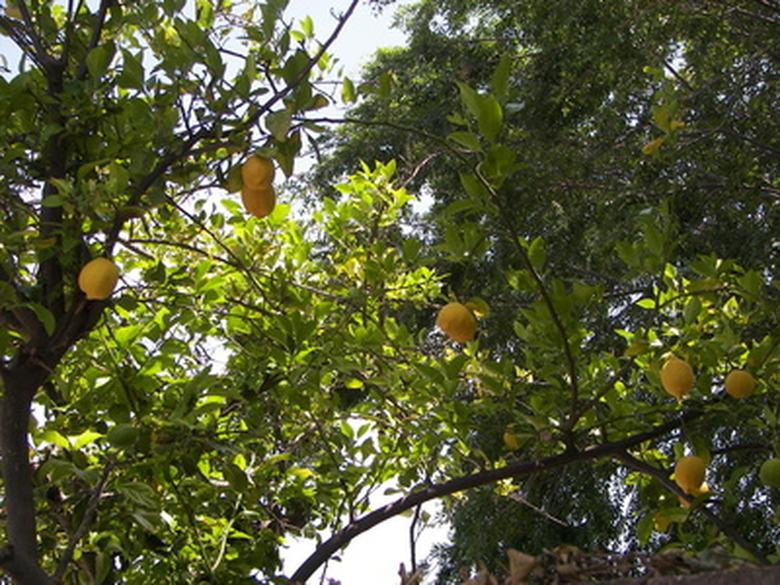How To Plant Fruit Trees On Wetlands
Things Needed
- Wood stakes
- Mallet
- Border material such as concrete blocks or railroad ties
- Topsoil
- Compost
- Hand pruners
Wetlands are not ideal growing conditions for fruit trees. The trees don't fare well when their roots are wet, a condition called "wet feet." The roots can rot and disease can develop. But if your yard has spots that tend to get wet, there is hope for planting a fruit tree there. It takes time and effort because you need to create raised planting beds, which will improve drainage for the trees. Plant bare root fruit trees in the late spring or winter, depending on which time is better for planting in your region.
Step 1
Choose a planting spot that is in the full sun. Fruit trees need as much light as they can get, especially if you're planting them in a wet location.
- Wetlands are not ideal growing conditions for fruit trees.
- But if your yard has spots that tend to get wet, there is hope for planting a fruit tree there.
Step 2
Space the holes 20 feet apart to accommodate the size of mature fruit trees. If you are planting semi-dwarf trees, plan for the holes to be closer together. Hammer a stake into the ground to mark the holes. Make sure the stake is sticking out 6 inches.
Step 3
Create raised planting beds around the trees. It is up to you whether you plant one long bed or several separate ones. Lay down timbers, railroad ties or concrete blocks to border the beds. Make sure the materials touch to keep the soil from falling out of the designated area.
- Space the holes 20 feet apart to accommodate the size of mature fruit trees.
- Hammer a stake into the ground to mark the holes.
Step 4
Fill each raised bed with topsoil until it is 18 to 24 inches deep. Work around the stakes, so you know where the fruit trees will be located.
Step 5
Level the topsoil in the raised planting bed. Spread a layer of organic matter that is 2 to 4 inches deep on top of the soil. This will improve the drainage and make the soil more fertile. Mix the substances together well.
Step 6
Open the bare root fruit tree to examine the roots. Make sure they are moist and in good health. Trim off dead or damaged roots.
- Fill each raised bed with topsoil until it is 18 to 24 inches deep.
- Spread a layer of organic matter that is 2 to 4 inches deep on top of the soil.
Step 7
Soak the roots in a barrel of water for 1 to 2 hours to moisten them. This will invigorate the fruit tree.
Step 8
Dig a hole at the location of each stake. Each hole should be big enough for the fruit tree's roots. Mound a small amount of soil to the bottom of each hole (in the center). This will improve drainage.
Step 9
Place the tree on top of the mound. Spread out the roots so they are heading in the direction they will grow. Check the depth to make sure the trees are at the same depth they were in the nursery. If not, add more soil to the mound or take some away.
- Soak the roots in a barrel of water for 1 to 2 hours to moisten them.
- Mound a small amount of soil to the bottom of each hole (in the center).
Step 10
Fill the hole back up with soil until it is 2/3 full. Press it down to eliminate air pockets.
Step 11
Water the fruit tree until it is thoroughly moist. Use your finger to determine when it has enough water. Fill the rest of the hole with the removed soil, and then water again to settle it down.
Tip
Store fruit trees in a small amount of soil if you can't put them in the ground right away. Water them to keep them moist.
References
- Texas A&M University Extension: Home Fruit Production – Stone Fruit
- University of Tennessee Extension: Trees for Poorly Drained Soils in the Landscape
- North Carolina Cooperative Extension Service: Producing Tree Fruit for Home Use
- Ohio State University Extension: Injury to Tree and Small Fruit Plants
